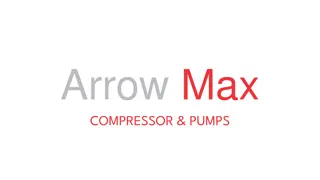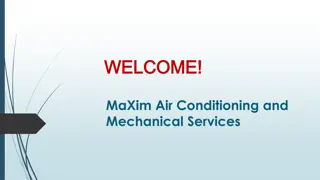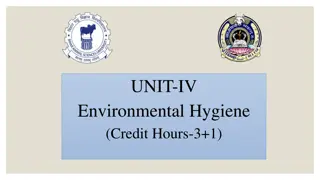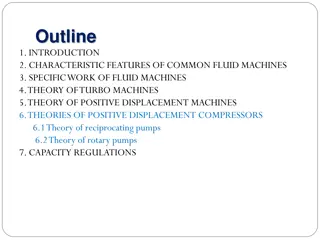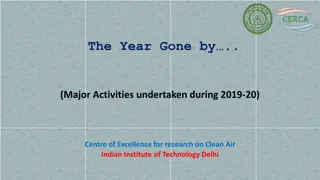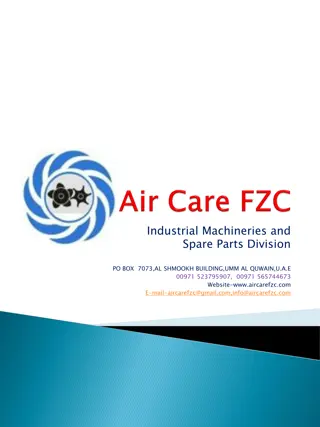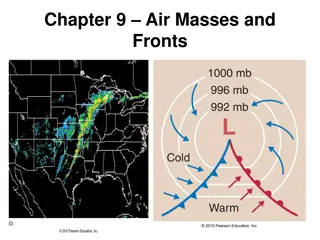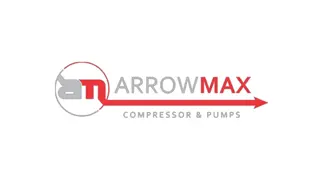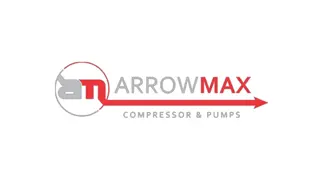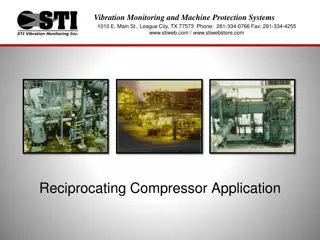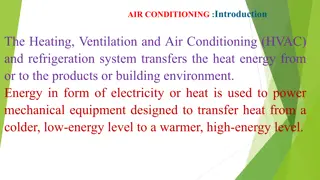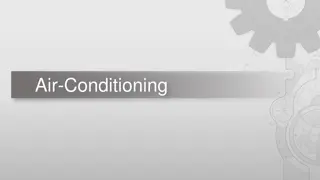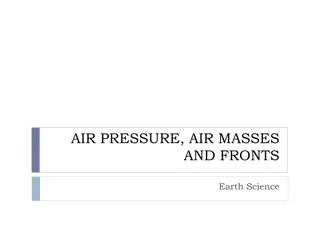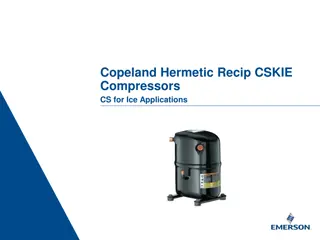Comprehensive Overview of Air Compressors: Types, Applications, and Significance
Air compressors play a vital role in various industries, converting power into kinetic energy by compressing air. This article explores different types of air compressors, such as reciprocating and rotary pumps, along with the significance of multistaging. It delves into applications like the utilization of reciprocating compressors for gas compression processes, highlighting single-stage and multi-stage air compressors. The content also discusses the manufacturing of high-pressure hydrogen compressors by Hydro-Pac, showcasing their expanding product offerings for hydrogen energy applications.
Download Presentation

Please find below an Image/Link to download the presentation.
The content on the website is provided AS IS for your information and personal use only. It may not be sold, licensed, or shared on other websites without obtaining consent from the author.If you encounter any issues during the download, it is possible that the publisher has removed the file from their server.
You are allowed to download the files provided on this website for personal or commercial use, subject to the condition that they are used lawfully. All files are the property of their respective owners.
The content on the website is provided AS IS for your information and personal use only. It may not be sold, licensed, or shared on other websites without obtaining consent from the author.
E N D
Presentation Transcript
Air compressors Branch : prepared by: mechanical dept. Asst. Pro. Shyamal prajapati D.A.Degree Engineering &Technology college (Mahemdabad)
INTRODUCTION An air compressor is a device that converts power (usually from an electric motor, a diesel engine or a gasoline engine) into kinetic energy by compressing and pressurizing air, which, on command, can be released in quick bursts. There are numerous methods of air compression, divided into either positive-displacement or negative-displacement types. http://upload.wikimedia.org/wikipedia/commons/thumb/0/0f/AirCompressorHusky.JPG/200px-AirCompressorHusky.JPG
OBJECTIVE Introduction Reciprocating Pump Rotary Pump Significance of multistaging in Air compressor pump
APPLICATION OF RECIPROCATING AIR COMPRESSOR. Reciprocating compressors utilize crankshaft driven pistons to compress gases for use in various processes. Much like internal combustion engines, an offset crankshaft causes rotary motion of a piston rod which is converted to linear motion via a crosshead. The crosshead can only move in a linear motion so that the rotary motion of the crankshaft is transformed into linear motion of the piston. As the piston moves to and fro, it takes in low pressure gas and increases its pressure. Unlike an internal combustion engine, the gas is not ignited. It is allowed to leave the compressor cylinder at a higher level of pressure than when it went in.
SINGLE STAGE RECIPROCATING AIR COMPRESSOR. A single stage air compressor works using the force of a piston and pressure sensitive valve. It is designed to house one cylinder that compresses air with a single piston stroke. This cylinder is connected to a power supply that provides the force needed to compress the air. It is different from double and multiple stage air compressors because it operates with just the one cylinder and valve.
MULTI STAGE RECIPROCATING AIR COMPRESSOR. Since the 1980s, Hydro-Pac has manufactured compressors for high-pressure hydrogen applications. We have developed the techniques to safely and reliably compress this difficult gas. Our initial experience was the design and manufacture of ultra high-pressure hydrogen compressors for pressures of 30,000 psi to 120,000 psi (200 to 825 MPa). The recent interest in hydrogen gas as an energy source has prompted us to expand our product offerings for this important application. In addition to the ultra-high pressure machines, we manufacture units for pressures of 1,000 psi to 15,000 psi (7 to 100 MPa) and flow rates of 1 scfm to 350 scfm (3 to 1200 kg/day).
DIFFERENCE BETWEEN SINGLE AND MULTI STAGE RECIPROCATING AIR COMPRESSOR Multi Stage Single Stage Traditional single-stage furnaces are designed to heat your home during the absolute coldest weather in your geographic area. Therefore, they run at their fullest capacity whenever they are in operation, regardless of the temperature outside. A two-stage furnace has two heating stages: low and high. The low stage runs at a lower capacity, and will heat your home as long as possible until it needs extra power to keep your home at the same temperature set on your thermostat. This is when the high stage kicks in. On average, a two-stage furnace only runs at high capacity 25% of the time it is on.
ADAVANTAGES &DISADAVANTAGES DISADAVANTAGES ADAVANTAGES Simple design Higher maintenance cost Lower initial cost Potential for vibration problems Easy to install Foundation may be required depending on size Two stage models offer the highest efficiency Many are not designed to run at full capacity 100% of the time Large rage of horse powers Special machines can reach extremely high pressures
DEFINITION A COMPRESSOR THAT DERIVES ITS PRESSURIZING ABLILLITY FROM A SPINNING COMPONANT. AN AIR COMPRESSOR USING A ROTARY IMPELLRE DRIVING AIR THROUGH A CURVED CHAMBER TO COMPRESS THE AIR.
WORKING PRINCIPLE THE COMPRESSOR TAKES IN A LOW PRESSURE GAS PASSES IT THROUGH A HIGH PRESSURE. ROTARY COMPRESSOR USE TWO MESHING HELICAL SCREWS,KNOWN AS ROTORS,TO COMPRESSOR THE GAS. ROTARY COMPRESSOR USED FOR MOVING A FLUID A SYSTEM AND USED FOR COPMRESSING AIR.
TYPES OF ROTARY AIR COMPRESSOR positive displacement compressor Dynamic compressor Roots Blower Centrifugal compressor Vane Axial Flow compressor compressor
ADVANTAGES MINIMUM MECHANICAL MAINTENANCE. ZERO WEAR. MAXIMUM RELIABILITY. LESS INSTALLATION COST. LOW OPRATING COSTS. ROTARY AIR COMPRESSOR HAVE GREATER AIR CAPACITY. PROTABILLITY AND VERSATILLITY.
DISADVANTAGES THEY TEND TO BE MORE EXPENCIVE. THEY TEND TO BE MORE NOISY. POWERFUL,MULTISTAGE PROTABLE. UNITS MUST BE GAS POWERD AND ARE HEAVY. PROTABLE UNIT ARE LESS POWERFUL THEN GAS COMPRESSOR.
Air Multistage Compressors are designed for high pressure operation up to 70.31 kg / cm2g (1000 psig). heavy duty These compressors are used in Valve and System Testing, PET Bottling Industries, Diesel Engine Starting, Laboratory Test Work, Space and Aviation Industries, Air Blast Circuit Breaking, Marine and Military Applications etc. Dairy,
cylinders of different diameters. A multi-stage compressor is one in which there are several is passed over a cooler to achieve a temperature very close to ambient air. The intake of air in the first stage gets compressed and then it again getting compressed and heated. This cooled air is passed to the intermediate stage where it is This air is again passed over a cooler to achieve a temperature as close to ambient as possible. Then this compressed air is passed to the final or the third stage of the air compressor where it is compressed to the required pressure and delivered to sufficiently in an after- cooler. the air receiver after cooling
Advantages of Multi-stage compression: The work done in compressing the air is reduced, thus power can be saved Prevents mechanical problems as the air temperature is controlled The suction and delivery valves remain in cleaner condition as the temperature and vaporization of lubricating oil is less The machine is smaller and better balanced Effects from moisture can be handled better, by draining at each stage Compression approaches near isothermal Compression ratio at each stage is lower when compared to a single-stage machine Light moving parts usually made of aluminum, thus less cost and better maintenance



